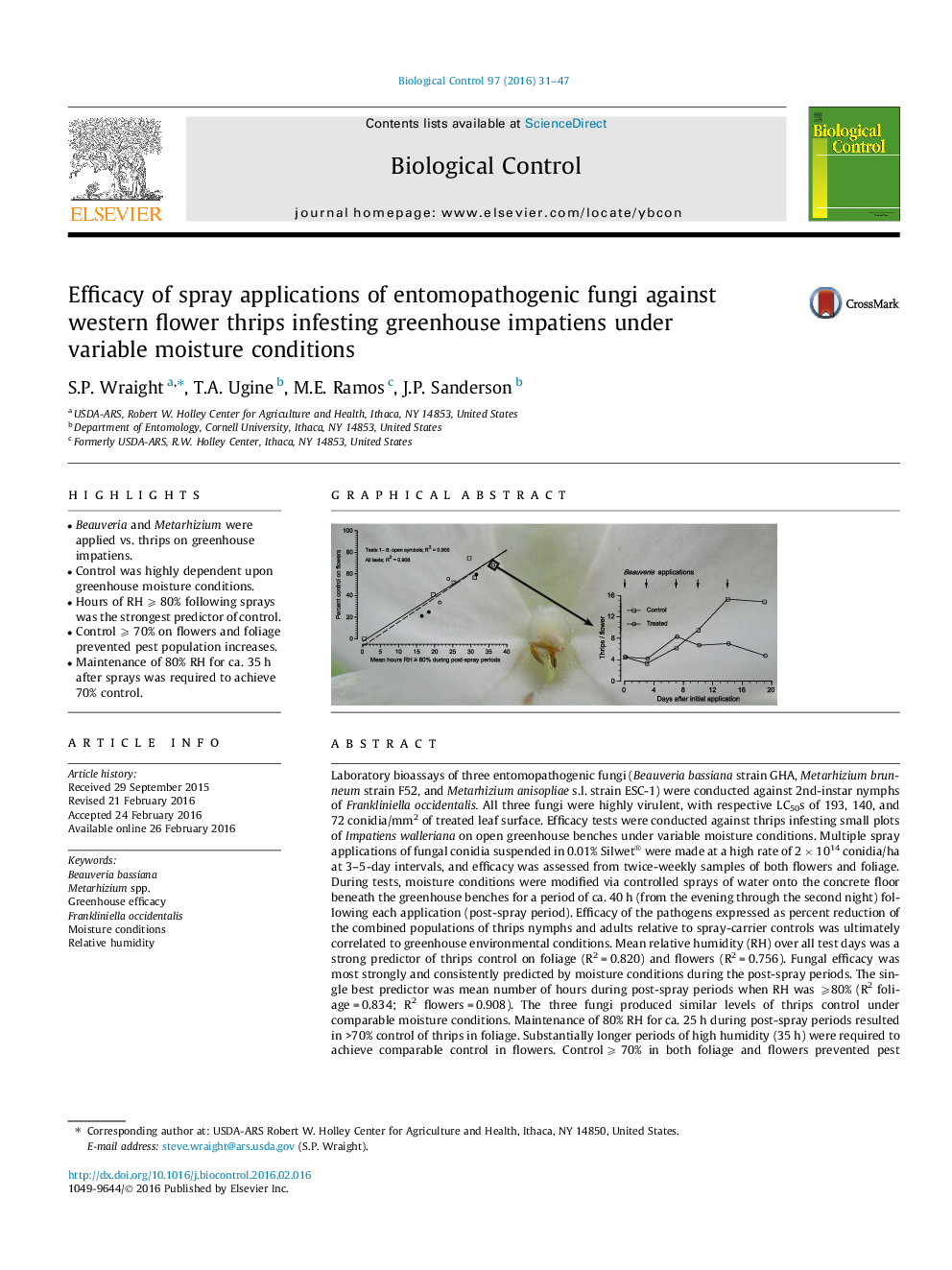| Article ID | Journal | Published Year | Pages | File Type |
|---|---|---|---|---|
| 4503684 | Biological Control | 2016 | 17 Pages |
•Beauveria and Metarhizium were applied vs. thrips on greenhouse impatiens.•Control of thrips on flowers and foliage was correlated to environmental variables.•Control was highly dependent upon greenhouse moisture conditions.•Hours of RH ⩾ 80% following sprays was the strongest predictor of control.•Control ⩾ 70% on flowers and foliage prevented pest population increases.•Maintenance of 80% RH for ca. 35 h after sprays was required to achieve 70% control.
Laboratory bioassays of three entomopathogenic fungi (Beauveria bassiana strain GHA, Metarhizium brunneum strain F52, and Metarhizium anisopliae s.l. strain ESC-1) were conducted against 2nd-instar nymphs of Frankliniella occidentalis. All three fungi were highly virulent, with respective LC50s of 193, 140, and 72 conidia/mm2 of treated leaf surface. Efficacy tests were conducted against thrips infesting small plots of Impatiens walleriana on open greenhouse benches under variable moisture conditions. Multiple spray applications of fungal conidia suspended in 0.01% Silwet® were made at a high rate of 2 × 1014 conidia/ha at 3–5-day intervals, and efficacy was assessed from twice-weekly samples of both flowers and foliage. During tests, moisture conditions were modified via controlled sprays of water onto the concrete floor beneath the greenhouse benches for a period of ca. 40 h (from the evening through the second night) following each application (post-spray period). Efficacy of the pathogens expressed as percent reduction of the combined populations of thrips nymphs and adults relative to spray-carrier controls was ultimately correlated to greenhouse environmental conditions. Mean relative humidity (RH) over all test days was a strong predictor of thrips control on foliage (R2 = 0.820) and flowers (R2 = 0.756). Fungal efficacy was most strongly and consistently predicted by moisture conditions during the post-spray periods. The single best predictor was mean number of hours during post-spray periods when RH was ⩾80% (R2 foliage = 0.834; R2 flowers = 0.908). The three fungi produced similar levels of thrips control under comparable moisture conditions. Maintenance of 80% RH for ca. 25 h during post-spray periods resulted in >70% control of thrips in foliage. Substantially longer periods of high humidity (35 h) were required to achieve comparable control in flowers. Control ⩾ 70% in both foliage and flowers prevented pest populations from increasing. Aspects of the impatiens crop that create a challenge for thrips control using fungal entomopathogens are described and discussed.
Graphical abstractFigure optionsDownload full-size imageDownload as PowerPoint slide
